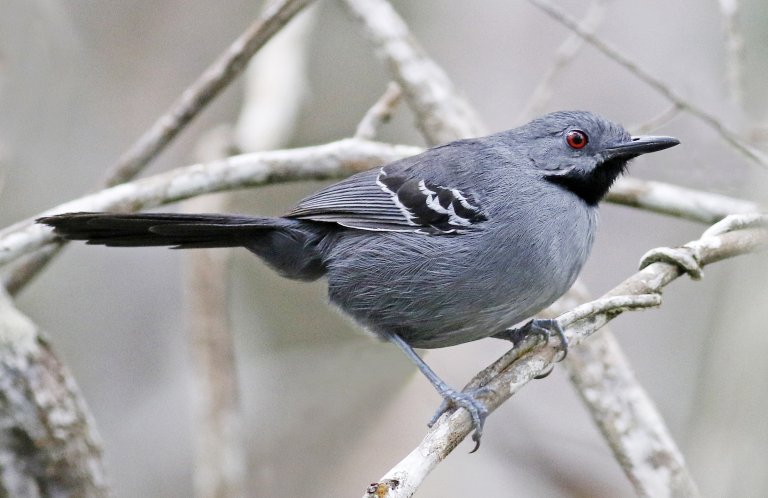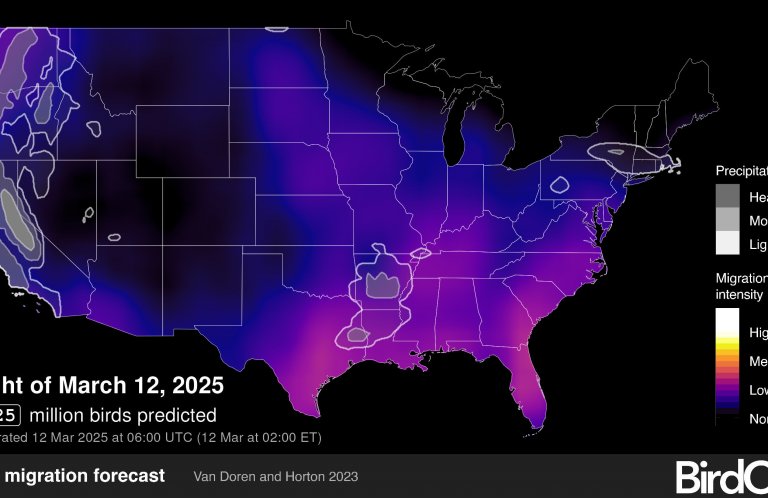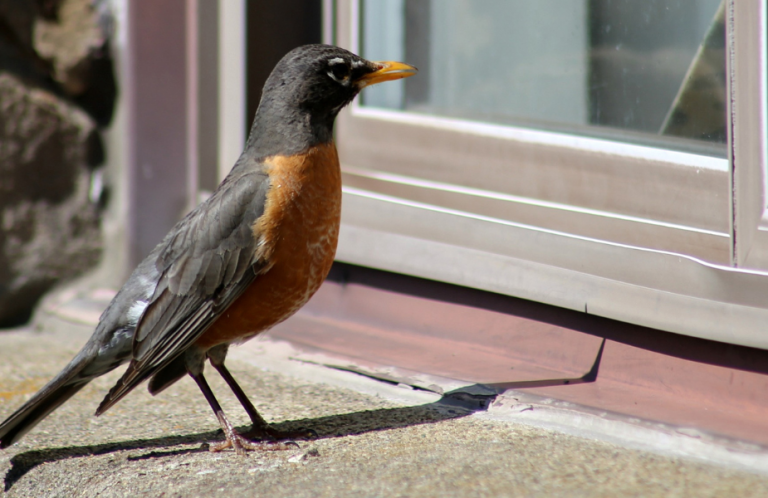Lessons from Long Point: Restlessness Defines Migration And Those Who Study It
Restlessness defines the spectacle of migration and those who study it.
Not long after college, I found myself at Point Reyes Bird Observatory (now Point Blue Conservation Science) working in the national seashore by the same name, right on the Pacific. My comrades at the Palomarin Field Station were itinerant field biologists and birders like me. Ostensibly, we were moving from field job to field job to gain experience and build our resumés so that we could one day get real jobs — full-time ones that, well, actually paid. Or at least this is what we told our parents, all of whom, I assure you, were concerned about our chosen career paths.
As we filled our days together netting and banding birds of the northern California coastal scrub, we'd sometimes fantasize about our next adventures. Maybe Southeast Farallon Island, just out of sight in the fog offshore; or Hawk Mountain, Pennsylvania; Cape May, New Jersey; Eilat, Israel; Falsterbo, Sweden; or Fair Isle, United Kingdom? It seemed that we, like migratory birds, felt a certain kind of restlessness.
Again and again, Long Point Bird Observatory (or LPBO) came up. An expansive string of parallel dune ridges extending nearly 25 miles to the center of Lake Erie, Long Point is uniquely situated for witnessing and studying migration. Given its strategic position, it is not surprising that LPBO, now a program of Birds Canada, was the Western Hemisphere's first bird observatory. The place changes your perspective on migration, making it seem even more amazing. My time there helped me to better understand the nuts and bolts of this amazing natural cycle.
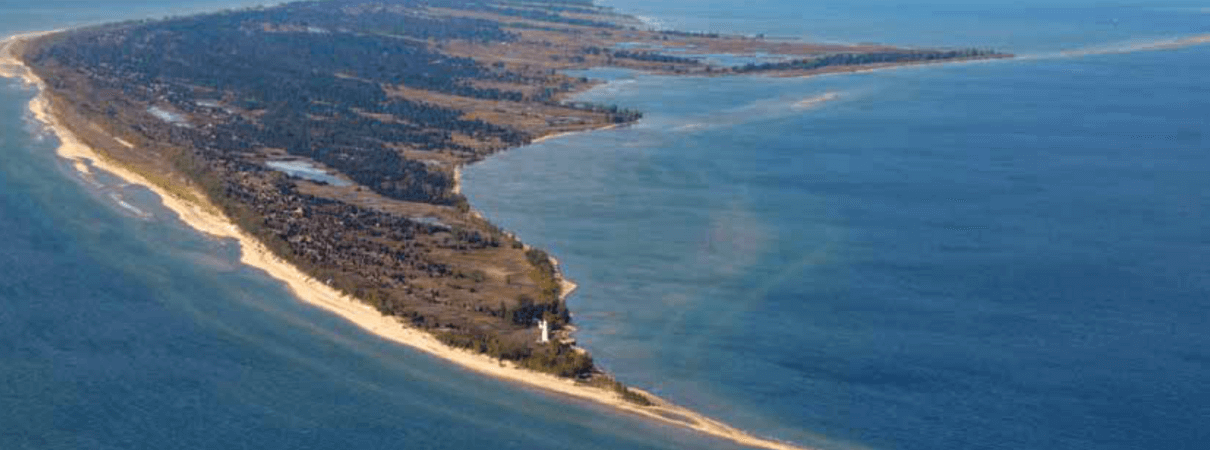
Long Point Peninsula in Ontario, Canada, is uniquely situated for observing and studying bird migration. Photo by SF Photo, Shutterstock.
Of course, wherever we are, we can learn something new during each migration, but usually on a far smaller scale. In your yard or local park in spring or fall, you might see a few regular year-round residents one day, then the next the place sparkles with new bird songs. What is going on here? My happy years at Long Point, and the career that followed, can help me explain.
Among the Flocks
I wanted to really see migration happening. That's why I applied for and luckily landed a position as a research assistant in LPBO's Migration Monitoring Program. I hoped that Long Point would live up to its reputation and provide the kind of dramatic migration experience I craved. I was not disappointed.
In early April 1984, easing ice conditions on the lake finally allowed us to run LPBO's 14-foot skiff out to the end of the point. It was a long trip, made longer by having to skirt huge marshes en route. This put us well off shore in places, exposed to wind and chop from the south. Forested dune ridges stretched ahead of us, then we passed ever-sparser clusters of cottonwoods clinging to the increasingly barren landscape as we approached the apex of the peninsula, known as the “Tip.” There, LPBO has a field station, near a 100-foot-tall lighthouse run by the Canadian Coast Guard.
The Tip was positively oceanic, with ice piled on the south shore and waves colliding with each other be-hind masses of gulls loafing on the sand. It was cold, windy, and rather bleak, but as I would realize in the coming weeks, it was paradise for someone eager to understand the unfolding of spring, with its ebbing and flowing pulses of migration. Long Point captivated me so much that I kept going back there for the next decade.
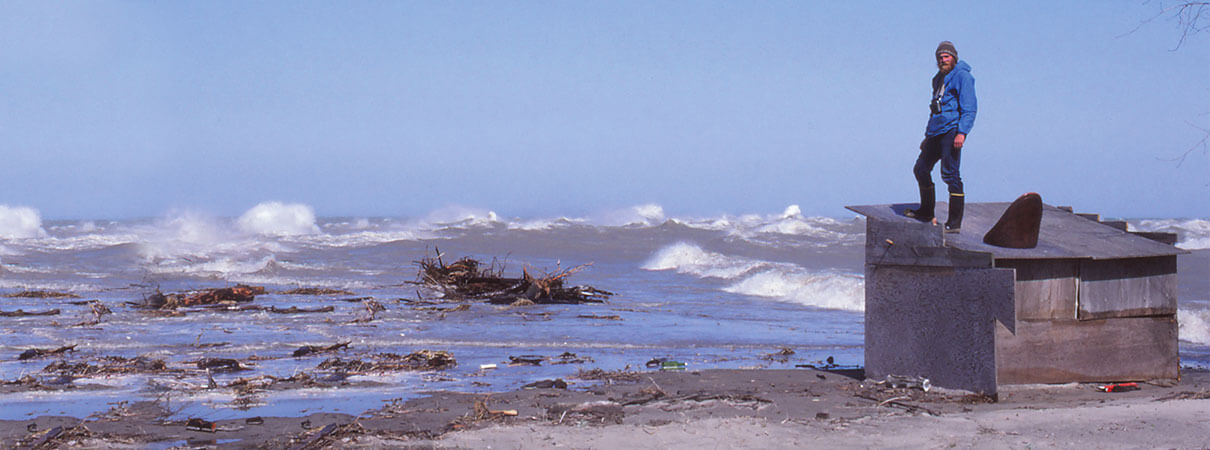
The author atop a bird blind at the tip of Long Point Peninsula, April 1984.
I had never been to a place where the seasonal mass movement of birds was so graphically on display. It was as if the planet was breathing — blowing thousands and thousands of birds at the point, gathering itself for a time, and then releasing another huge feathered breath, and another, and another…. There was drama: Merlins pursuing kinglets and juncos above the waves as they struggled to reach land, and big flocks of everything from sea ducks to flickers, to jays, to shorebirds. After rough overnight weather, warblers foraged on the ground in the wrack lines next to the water. One day brought hundreds of Winter Wrens scurrying and fluttering around the Tip like little mice. During a morning census, a Brown Creeper flying through the Tip's low cottonwoods attached itself to my colleague's leg, then hitched its way up nearly to his shoulder before flying on to the next tree.
We banded ridiculous numbers of birds with business-like efficiency between hurried cups of coffee and bowls of hot oatmeal. On foggy, rainy nights, clouds of nocturnal migrants were attracted to the beam of the lighthouse, calling as the light passed over them — a problem, I hasten to add, that was thankfully largely remedied by a retrofit of the light in 1989.
Migration's Orderly Procession
Among the most striking aspects of migration at Long Point was its orderly progression. It went like this:
- Late March and early April was prime time for waterfowl, early sparrows such as Song and Fox, and clouds of Common Grackles and Red-winged Blackbirds.
- By late April, Ruby-crowned Kinglets and White-throated Sparrows were really coming through and the first warblers were arriving.
- Early to mid-May was prime for warblers, tanagers, and orioles.
- Late May to early June brought Gray-cheeked and Swainson's Thrushes, flycatchers such as Yellow-bellied and Acadian, along with Yellow-billed Cuckoos.
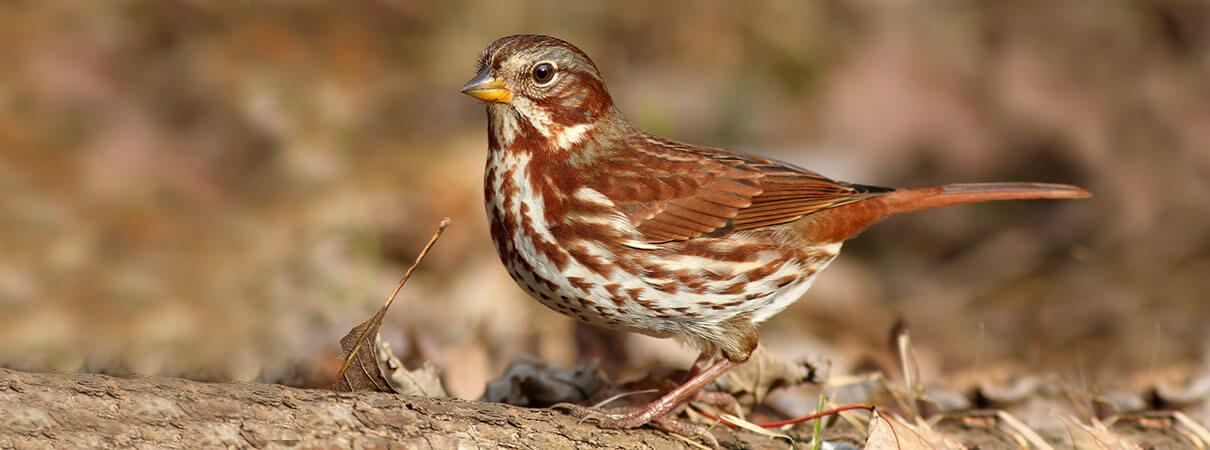
Fox Sparrow. Photo by Micea Costina/Shutterstock.
There were more than 200 different species, so it was a complex and constantly changing mix of newly arriving species that showed up as others tapered off and departed for points north. The procession of birds marked the passage of spring as much as leafing trees, blooming wildflowers, and hatching insects. You could pretty much set your calendar by it. This type of sequencing of migration plays out similarly, though not as dramatically, across the continent. The arrival times I mention above might differ from place to place in the East, but many of the players and sequences are the same.
Why does migration proceed in this way? What factors determine the timing of migration? Joel Carl Welty, the author of one of my well-worn ornithology textbooks, put it this way: “Two urges dominate nearly all the waking activities of a bird: hunger and love.” The former keeps individual birds alive in the here and now, while the latter, breeding, ensures the perpetuation of the species. Let's look at how these urges affect migration and its timing.
The Ultimate and Proximate
Migration is complex and its timing, pace, and volume are controlled by multiple factors, some exerting their influence on migration in the “here and now,” called proximate factors, while others have shaped migration behavior for each species as they have evolved over thousands or even millions of years — long-term influences known as ultimate factors. Ultimate factors act over evolutionary time to dictate the approximate dates when migrants come and go from their breeding and wintering grounds.
Proximate factors determine the specific time when migrants will make their move in a particular place and year. These environmental cues include photoperiod (length of day), temperature, wind direction, snow cover, and food availability.
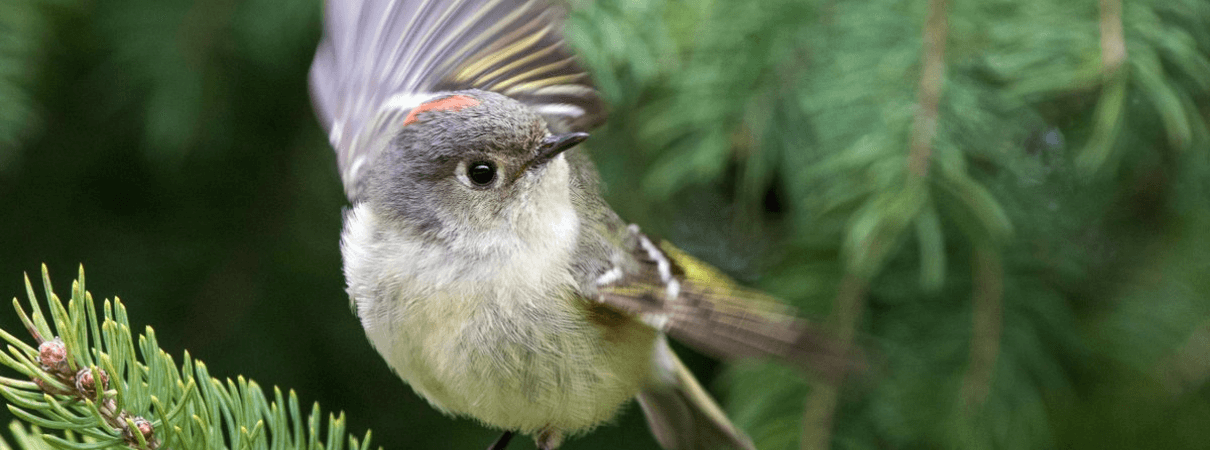
Ruby-crowned Kinglet male. Photo by Mircea Costina, Shutterstock.
In both ultimate and proximate factors, the exact mechanisms that determine when birds migrate are still not completely understood. The interplay among a bird's genetic makeup, response to external stimuli, and its endocrine system is still being explored.
Climate Is Key
The leading ultimate factor affecting the timing of migration appears to be climate, which can in turn affect other ultimate factors — in particular the availability of food and suitable nesting conditions. In the span of our human experience, weather can sometimes seem to vary considerably from one year to the next, but over millennia the general patterns of climate have exerted strong influences on the evolution of migratory behavior. Insectivorous species such as the Magnolia Warbler or Least Flycatcher don't want to arrive at their breeding grounds in March or they may find heavy snow cover and no insect prey. They come in May, when the prospects are much better.
Adult males of many songbirds migrate before immature males or females. Apparently, it is worth the risk to push the weather envelope and to arrive on the breeding grounds early to secure the best-possible territories and the reward of superior breeding success that may result. Certain characteristics of breeding behavior are similarly hard wired and leave birds vulnerable to climate conditions.
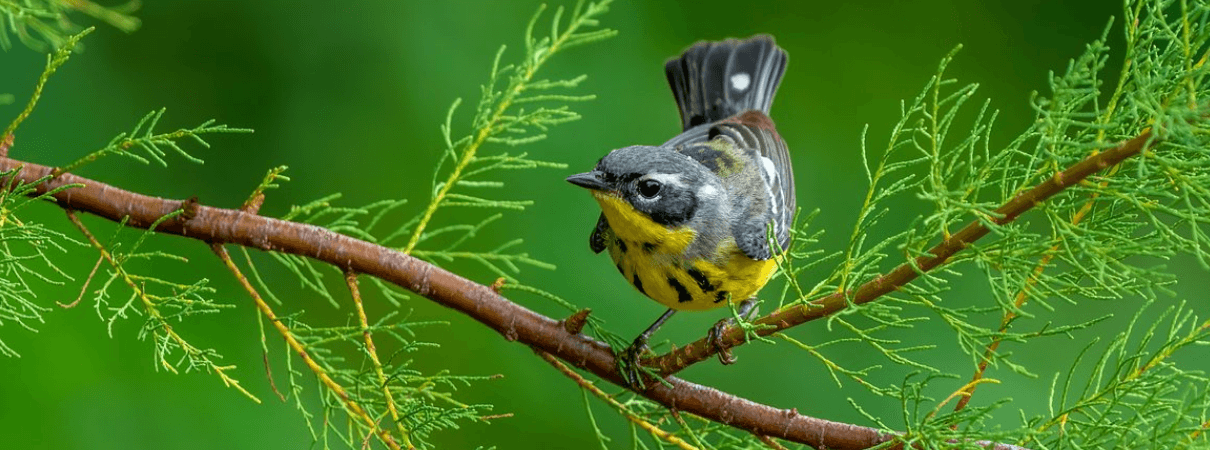
Magnolia Warbler. Photo by Vineeth Radhakrishnan, Shutterstock
Snow Geese and Canada Geese breeding in the Canadian Arctic have long breeding periods, but a relatively narrow window in which to lay their eggs and rear the chicks to fledging before snow comes again, endangering their young. This requires early arrival on the breeding grounds, when the ground may still be covered in snow, with food scarce. However, the large body size of geese allows them to build up considerable fat stores, so they can go without feeding during the first days or even longer on the breeding grounds. Shorebirds that nest on the open tundra such as the Red Knot and Sanderling have a different problem — unlike the geese, their small body size doesn't allow them to store large amounts of nutrients. They tend to migrate late, arriving on the breeding grounds just as conditions become suitable for both nesting and foraging.
Climate change is playing havoc with these ultimate factors, happening faster than many bird species can adapt to it. While it is true that some species such as the Black-throated Blue Warbler have actually begun to migrate earlier, they may not be keeping pace with their insect prey, which seem to be adapting faster to warmer temperatures than the birds.
There are now multiple examples, especially from studies of European birds such as the European Pied Flycatcher, of birds moving north earlier but still missing the new peak of insect abundance. Synchronicity of the two is critically important for birds to raise young successfully.
Zugunruhe?
Johann Andreas Naumann was an amateur naturalist living in the later 18th and early 19th centuries, and an early student of bird migration. In 1822, he noted that migratory birds fattened up before migration and he also noticed the phenomenon of pre-migratory restlessness — what he termed Zugunruhe, which in German means “migration anxiety.” Migratory birds become more active prior to migrating and when exposed to the right stimuli, restlessness peaks, and then the birds depart. But what sparks this? What's the proximate cue? A bird may be predisposed by generations of evolution to depart for the breeding grounds at a particular time of year, but what conditions prompt it to leave on a particular day or night?
Birds are highly attuned to the timing and length of daylight periods, which change in a regular pattern worldwide, although these changes are subtler close to the equator. The White-crowned Sparrow, often called the “white rat of ornithology,” was one of the first species studied (and subsequently re-studied) to better understand how Zugunruhe works in birds.
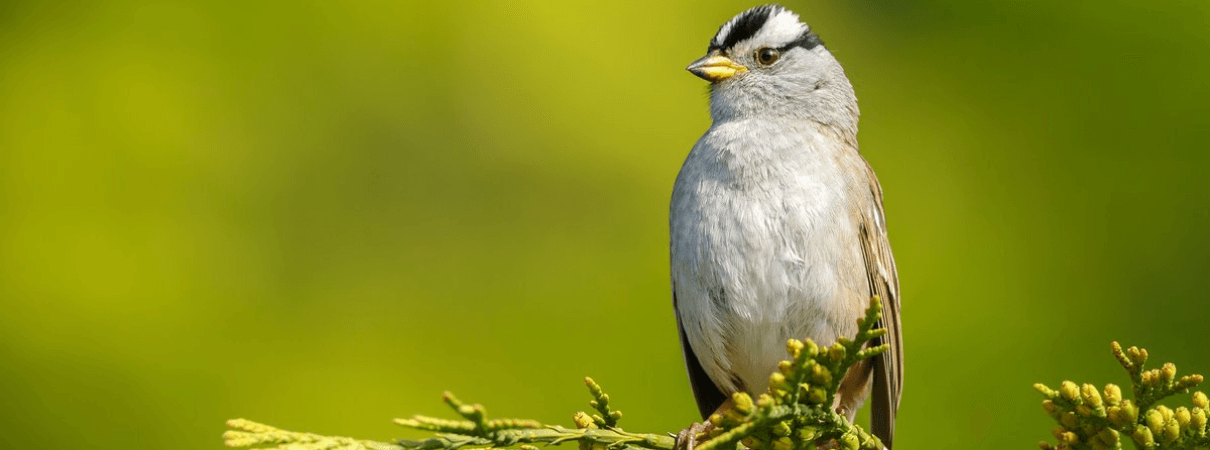
White-crowned Sparrow. Photo by Menno Schaefer, Shutterstock.
Starting in the early 1950s, Donald Farner and his graduate students at Washington State University began research on bird behavior and physiology during migration. They documented that in April and May, as daylight hours lengthened, Zugunruhe increased in captive White-crowned Sparrows. Other researchers have demonstrated that the intensity of Zugunruhe can even be manipulated by exposing birds to differing photoperiods. Air temperature has also been shown to trigger restlessness, via warm weather in spring and cooler weather in fall.
Photoperiod seems to affect levels of various hormones that spark the physiological responses causing migration. Studies of the Eurasian Blackcap, a nocturnal migrant songbird, have demonstrated that as daylight lengthens, melatonin, a hormone important in regulating resting and sleep behavior, decreases at night, when nocturnal migrants are on the move.
May the Wind Be Always at Your Back
Another key proximate factor affecting the timing of migration is weather. It is certainly easier for migrants to fly north with the wind behind them, and birds seem to be able to read weather fronts and winds that will make for energetically easier passage. These meteorological factors are among those that cause waves of migration that can be particularly dramatic during spring migration.
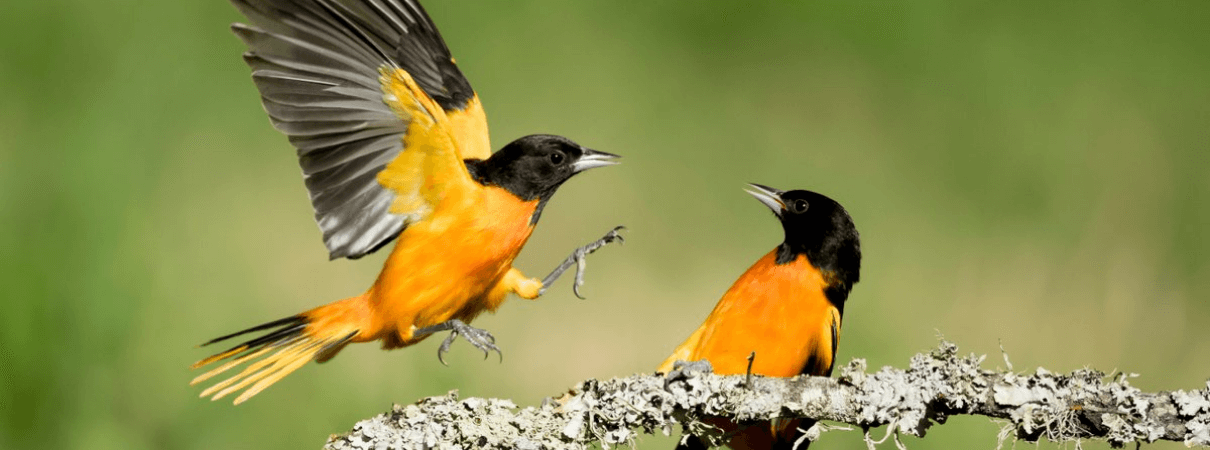
Baltimore Orioles. Photo by Agami Photo Agency.
In North America, and elsewhere in the Northern Hemisphere, spring weather systems in which a high pressure system is followed closely by a low pressure system generate south winds that push warm air north with them. Under these conditions, waves of migrants take to the skies, availing themselves of the best flying conditions. In fall, lows followed by highs bring north winds that migrants can use to work their way south. Modern technology, especially NEXRAD radar, allows us to not only forecast weather better than ever — we are also getting just as good at predicting waves of birds, especially since large numbers of migrants on the move actually show up on radar. Be sure to check out BirdCast for real-time bird migration predictions.
My experiences at Long Point changed my life. I got serious about ornithology and then bird conservation, and made a career out of studying and protecting birds. That first spring migration at LPBO also changed the rhythm of my life, and I now anticipate each spring migration and experience my own version of Zugunruhe, culminating in me picking up my binoculars and venturing forth each morning to see which new species have arrived.






































